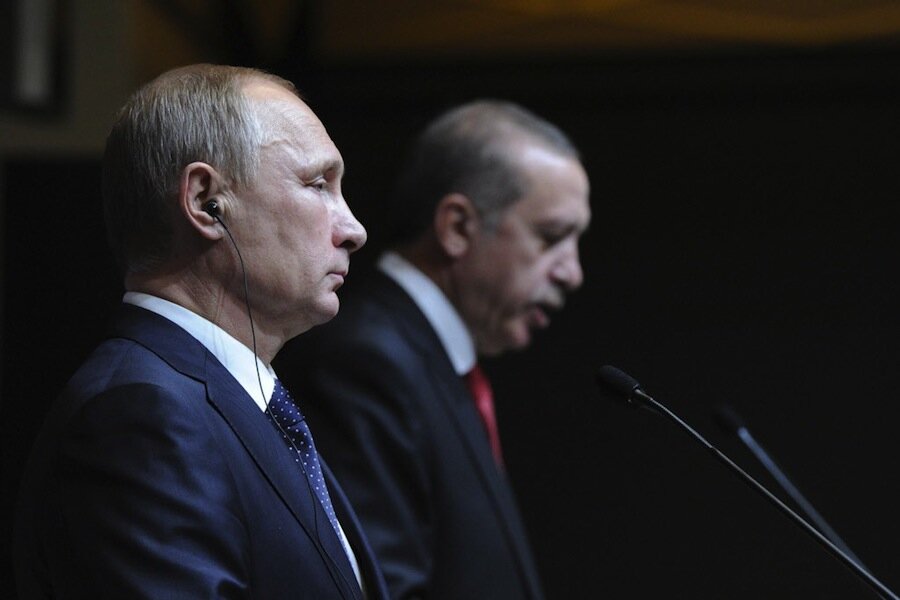Bypassing Ukraine, Russia eyes gas pipeline through Turkey
Loading...
Russia’s state-run gas company Gazprom says it has taken a step toward building the Turkish Stream pipeline by securing permission from Ankara to begin surveying waters of the Black Sea for the offshore leg of the project.
In a statement issued late June 22, Gazprom said, “This document envisages engineering surveys for the first line of the project in the Turkish Exclusive Economic Zone [EEZ] and within Turkey’s territorial waters.”
On June 15, Gazprom provided the Turkish government with coordinates for the route of the pipeline, which would take it beneath the Black Sea to Turkey’s European coast, demonstrating that the plan doesn’t encroach on the EEZ of neighboring Bulgaria. The line then would move west through Greece and from there into Western Europe.
Gazprom aims to maintain a steady supply of its gas to valuable Western customers. European Union nations get nearly one-third of their gas supplies from Russia, and so far half of that amount has been flowing through Ukraine.
That supply, however, has been interrupted three times in the past decade, in 2006, 2009 and 2014, because of political and pricing disputes between Kiev and Moscow, leading the EU to search for alternative sources of fuel and Russia to develop alternate routes for its pipelines.
Already Russia has developed one new pipeline, called Nord Stream, which ships gas to Germany via the Baltic Sea. It also had begun work on a second conduit, the South Stream, but that plan was scrapped in December because of an EU rule that forbids one entity from owning both the pipeline and the gas it carries through EU territory. (Related: What Oil Export Ban Means for Investors)
As for the Turkish Stream pipeline, its offshore elements will include four conduits, each capable of shipping as much as 15.75 billion cubic meters of gas per year. The pipelines are expected to follow more than 400 miles of the same route beneath the Black Sea as had been planned for South Stream, then switch to a new route to reach land on Turkey’s European coast.
In its announcement, Gazprom said the first leg of the Turkish Stream pipeline would deliver gas exclusively to the Turkish market. That conduit alone will cost Gazprom an estimated $3.73 billion.
The Turkish Stream pipeline, if realized, could become a significant competitor to the Trans-Anatolian Pipeline, or TANAP, which would ship up to 31 billion cubic meters of gas per years from the Caspian Sea from Azerbaijan westward through Turkey and eventually to Europe. It is expected to be ready to begin serving its Western customers in 2020. (Related: Investors Should Prepare For The Long Infrastructure Boom)
In the meantime, Alexander Novak, Russia’s energy minister, says he expects Ankara and Moscow will sign an agreement to build Turkish Stream by the end of June. But Turkey’s energy minister, Taner Yildiz, says no such agreement would be binding until it is ratified by his country’s parliament.
Turkey now has no government because the ruling Justice and Development Party lost its parliamentary majority in the country’s general election on June 7.
By Andy Tully of Oilprice.com
More Top Reads From Oilprice.com:
- Gazprom-Shell Partnership Flies In The Face Of Sanctions
- Why A U.S Shale Slowdown Will Hardly Affect Oil Prices
- China’s Energy Demand May Not Increase Until 2017
Original story: http://oilprice.com/Latest-Energy-News/World-News/Controversial-Gazprom-Pipeline-Clears-Hurdle.html
Source: http://oilprice.com/







